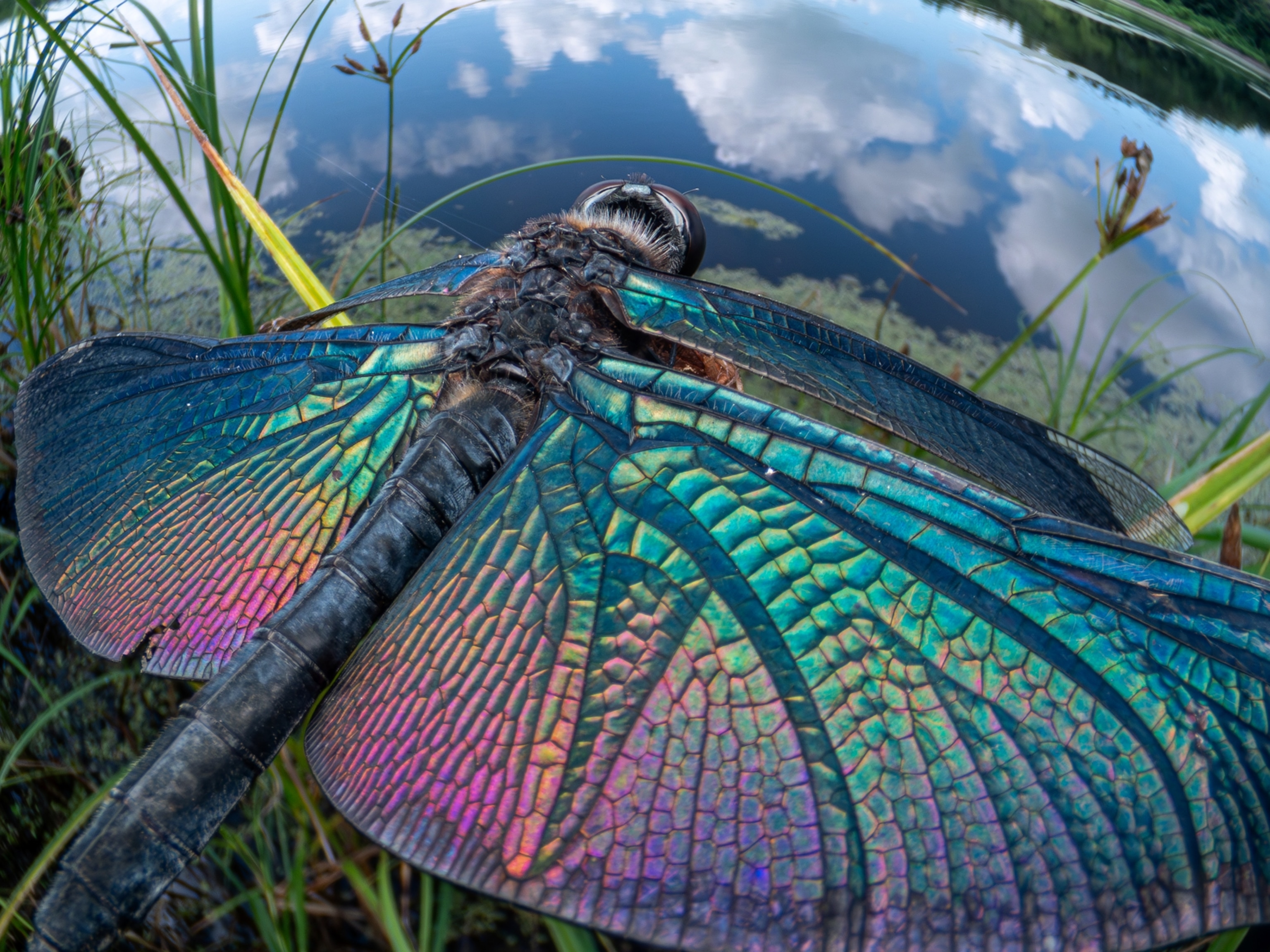Watch How Bees Teach Each Other to Solve Problems
New research with bumblebees hints at how knowledge can quickly spread through a population.
Bee see, bee do. At least that's the conclusion of research published earlier this month, showing that bumblebees learn to solve problems by watching each other.
In the first study of its kind in insects, scientists constructed experiments that challenged bees to pull strings in order to access rewards of nectar. It's a technique that has long been used to test cognition in various vertebrates, but hadn't yet been tried with insects.
The study was published in early October in the open-access journal PLOS Biology and was led by Lars Chittka from London's Queen Mary University. (Learn about the bees that have just been declared endangered.)
The first step was proving that bees could learn to solve a simple problem. But what's more interesting is that other bees that hadn't encountered the problem before picked up the ability to solve it more quickly when they had a chance to watch a trainer bee that had already figured out the puzzle.
Further, that knowledge was shown to spread from bee to bee throughout a colony, even if the first bee that figured out the trick died.
The scientists hoped their study would shed light on a bigger picture: how social learning spreads through a population. That might even have implications for the evolutionary roots of culture in human beings, they noted.
To arrive at these conclusions, Chittka and team made artificial flowers and filled them with an artificial nectar made of sugar water. They put the flowers under Plexiglass and attached a string.
Then they added bees. While most of the insects failed to get at the nectar, a few eventually figured out how to access it, by pulling the string.
Watching bees tackle the task both intrigued him and made him laugh, Chittka said in a statement.
“What I like about the work, in addition to the experimental and intellectual challenges and insights, is the sheer absurdity of seeing bees solving a string-pulling puzzle," said Chittka.
The team discovered that they could greatly increase the success rate of the bees by first placing them inside a transparent box where they could watch an experienced bee pull the string. Then, when the boxed bees were released, they often knew what to do and successfully pulled the string to retrieve nectar 60 percent of the time. (See how pesticides can affect bees.)
Next, the researchers added a bee that was experienced in string pulling to each of three new colonies that had never seen the experiment before. Within a short time, about half of all those bees were soon pulling the strings. That result suggests the learned behavior was able to spread from bee to bee, similar to the way cultural ideas spread in other animals, including people.
The experiment suggests that social learning may be more widespread in the animal kingdom than people previously thought, the authors wrote.
Further, “the single task that actually requires a big brain has not been discovered yet, and indeed there is more and more evidence, both from experiments on small-brained insects and computational neuroscience, that small circuits can deal with exceptionally complex challenges,” said Chittka.
Bee researcher Jason Graham of the University of Hawai'i calls the study "fascinating" and "elegant in its simplicity."
"I'm now left to wonder if this type of social tool-use learning would translate with other bees," says Graham, who was not involved in the research.
Would solitary bees pick up the behavior as fast as social bees like bumblebees, he asks?
This article was updated on October 24 at 2 pm ET, with comments from Jason Graham.





